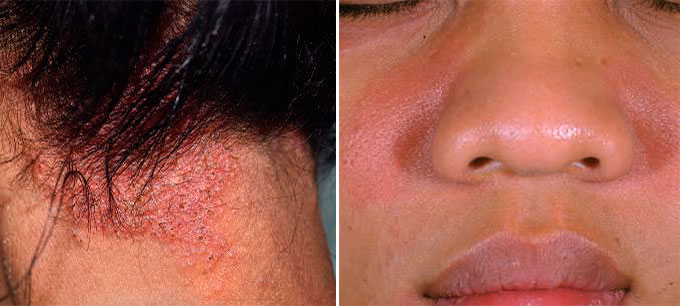Managing Seborrheic Dermatitis: A Comprehensive Guide for Cosmetologists
Seborrheic dermatitis is a chronic skin condition commonly seen in the cosmetology field. Marked by inflammation of the sebaceous glands, this ailment often presents as red, flaky skin, persistent dandruff, or itching, causing physical discomfort and cosmetic concerns. As skincare professionals, cosmetologists play a critical role in managing seborrheic dermatitis, which involves understanding the condition, suggesting suitable skincare practices, and knowing when to refer to a dermatologist.

Dermatitis
Understanding Seborrheic Dermatitis
Seborrheic dermatitis is a chronic, relapsing form of skin inflammation primarily affecting areas rich in oil-producing sebaceous glands. These include the scalp, face, and central chest. It often presents with redness, scaling, itching, and dandruff, with scales ranging from dry, flaky patches to yellowish, oily-looking crusts.
While the exact cause of seborrheic dermatitis is unclear, several contributing factors have been identified. These include an abnormal inflammatory response to a yeast known as Malassezia, which normally lives on the skin, and changes in skin cell function. Environmental factors such as stress, cold and dry climates, and certain medical conditions, including immune deficiencies, can also trigger or exacerbate the symptoms.

Cosmetologists’ Role in Managing Seborrheic Dermatitis
As experts in skin health and aesthetics, cosmetologists are frequently the first to notice signs of seborrheic dermatitis in their clients. Their role involves:
- Identification: Cosmetologists must recognize the typical signs and symptoms of seborrheic dermatitis, which include scaling, redness, and itching in sebum-rich areas. It’s important to note that while seborrheic dermatitis is not contagious, its appearance can be similar to other skin conditions that require different treatments or are contagious, making accurate identification essential.
- Skin Care Recommendations: One of the fundamental roles of a cosmetologist in managing seborrheic dermatitis is recommending appropriate skin care products and practices. Non-oily, non-irritating, and sensitive skin products can help alleviate symptoms. Hydration and barrier repair strategies are also essential, and clients should be guided on the gentle application of products to avoid aggravating the inflammation.
- Client Education: Clients with seborrheic dermatitis need to understand their condition and how it can be managed. Cosmetologists can provide education about the chronic, relapsing nature of seborrheic dermatitis and the importance of consistent skincare practices.
- Referral to Dermatologists: While cosmetologists can provide support and recommendations for managing seborrheic dermatitis, moderate to severe cases should be referred to a dermatologist for a comprehensive evaluation and treatment.
Seborrheic dermatitis is a common skin disorder encountered in the cosmetology field. By understanding its characteristics, providing suitable skincare recommendations, educating clients, and knowing when to refer to a dermatologist, cosmetologists can ensure they provide the highest level of service to their clients. Their role in managing this condition is a testament to their crucial part in promoting skin health and client wellbeing.






